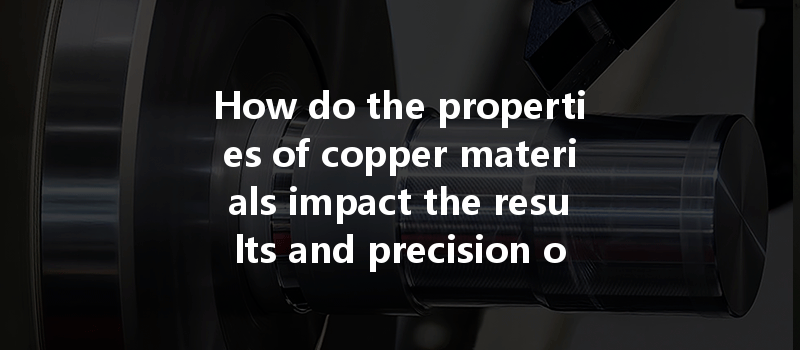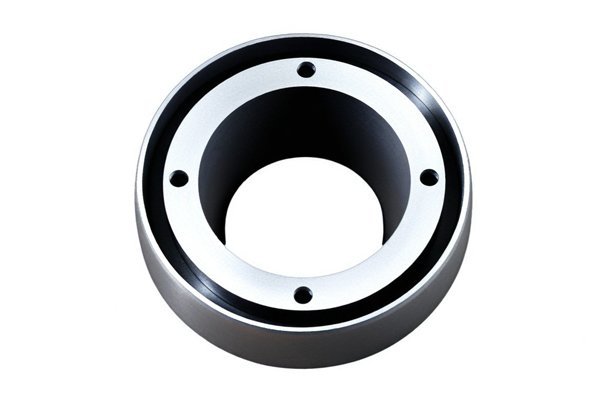*
Did you know that copper is one of the most widely utilized metals in the manufacturing sector? Not only is it celebrated for its excellent electrical conductivity, but its machinability also makes it a prime candidate for CNC machining. In fact, statistics indicate that copper, alongside its alloys, plays a crucial role in various industries, including electronics, aerospace, and automotive. However, many manufacturers often overlook how the unique properties of copper affect CNC machining results. In this blog, we will delve into the fascinating intersection of copper properties and CNC machining, providing you with valuable insights that can enhance your machining processes.
Understanding Copper: A Metal of Many Traits
Before we explore the impact of copper properties on CNC machining, it’s essential to understand what makes this metal unique.
The Impact of Copper Properties on CNC Machining
CNC machining is the process of utilizing computer-controlled tools to remove material from a workpiece to fabricate complex parts. The unique properties of copper influence several factors in this process.
Copper’s ductility and malleability afford excellent machinability; however, its softer nature means that it can also lead to challenges during cutting. The softer material can cause the cutting tool to deform if not managed correctly, requiring careful selection of the tool geometry and cutting parameters.
Solution: To mitigate this issue, manufacturers should optimize cutting speeds, feed rates, and tooling materials. Using tools made from high-speed steel (HSS) or carbide is advisable, along with coatings that enhance tool life, such as titanium nitride (TiN). Maintaining proper coolant flow during machining will also help to ensure efficient chip removal and temperature control.

Due to copper’s excellent thermal conductivity, heat generated during the machining process dissipates more rapidly than in other metals. This can often lead to challenges such as thermal deformation of the workpiece or tool wear.
Solution: Employing advanced cooling techniques like coolant through the tool (CTT) can help manage heat better. It’s also wise to adjust the spindle speed to reduce heat generation, which can enhance the quality of the cut and prolong tool life.
The surface finish of a machined part is crucial in many applications, particularly in electronics. Copper can achieve exceptional surface finishes; however, strategies must be employed to ensure that the desired finish is attained without sacrificing dimensional accuracy.
Solution: Using proper machining strategies and tools, such as using dull tools for finishing passes or employing polishing techniques, can help achieve the required surface quality. Computers can also aid in programming CNC machines to ensure precision without comprising the finish.
The properties of copper can be significantly altered by the addition of alloying elements. For example, adding zinc creates brass, which has different machinability characteristics than pure copper.
Solution: When selecting copper alloys for CNC machining, it’s important to understand how these alloying elements can affect not only manufacturability but also the end-use properties of the manufactured components. Consulting with material scientists can aid in making informed decisions about which copper alloy will best suit given machining demands.
Due to copper’s softness, tools can experience varying rates of wear, which can impact machining performance over time. Understanding the wear characteristics of tools when working with copper can lead to more effective monitoring and replacement strategies.
Solution*: Implementing a tool monitoring system that measures tool wear in real time can expand machining capabilities. Predictive maintenance software and analytics can also provide insights into when to replace tooling based on actual operational data.
Understanding and working with the properties of copper in CNC machining is more than just routine processing; it’s about harnessing the unique qualities of this versatile metal to optimize precision, efficiency, and functionality. By focusing on improving machinability, managing heat generation, and monitoring tool wear, we can unlock the full potential of copper materials in various manufacturing applications.
As industries continue to evolve and demand more intricate and reliable parts, recognizing the nuances of copper and its impact on CNC machining processes will become increasingly crucial. In a world where precision is paramount, knowledge is your strongest tool. So, the next time you plan a CNC machining project that involves copper, keep these insights in mind. Doing so not only ensures the best results but also positions your business for innovation and success in the marketplace.
This exploration of copper material properties is essential for anyone involved in CNC machining, mechanics, or manufacturing. Recognizing the challenges and employing effective solutions can create a significant competitive edge, making your decisions worth contemplating as you advance in your career or business. Remember, every detail matters in the realm of CNC machining, and understanding the materials you work with could ultimately define your success.






